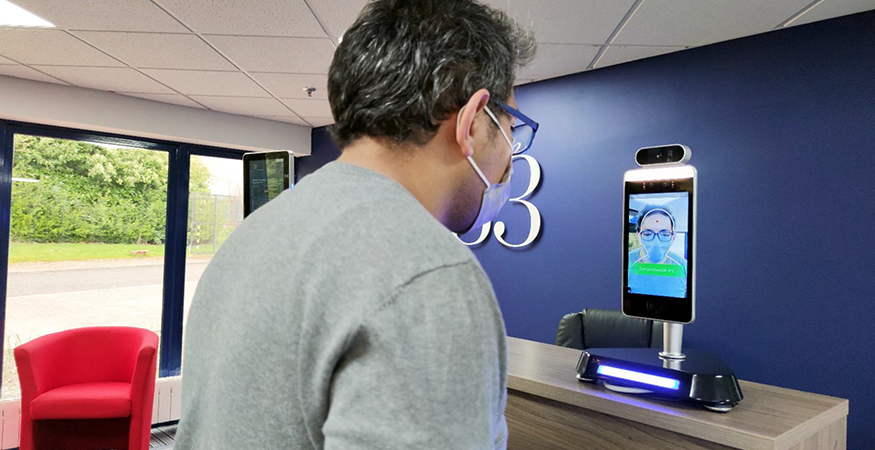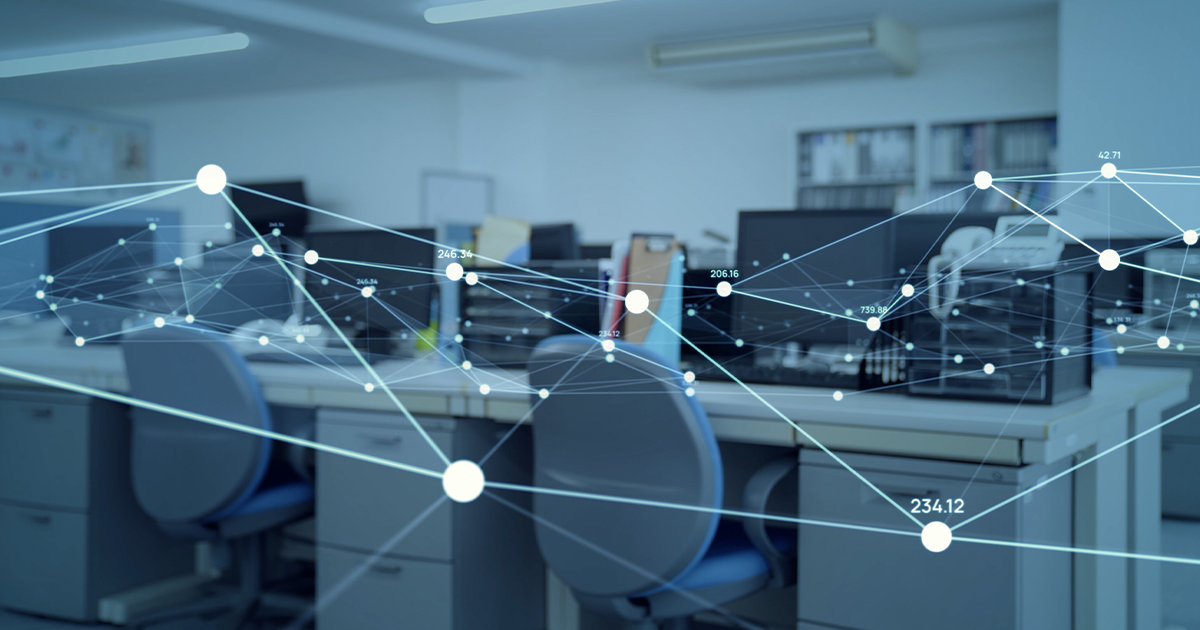Employees who have been working from home for the past few months are returning to the office, and they’re finding their office is different than the one they left behind.
Even though many organizations have had great success with remote working, offices are still the lifeblood of most companies. Without an office building, training is tougher, hiring and integrating new employees is more complicated and personal connections are lost.
Businesses are making important changes to try to protect returning employees from the coronavirus. Many people will work in shifts to limit the number of people together at once. Other offices are deploying contactless doors and elevators, new air circulation vents or plexiglass barriers. But whatever changes your business might use to make offices safer, it takes the right technology to make these changes effective.
TECHNOLOGY AND BIOLOGY
The good news is that there is powerful new office technology you can deploy that makes it possible to put new policies in place. As more employees start to come back into the office, companies will need to use monitoring technology to see usage levels for the space, see what rooms are being booked and determine how many employees are working from home. To put any policies in place though, an office needs a gatekeeper. That starts with a temperature screening kiosk.
Rapid temperature screening technology is incredibly powerful and sophisticated, taking temperatures in a second, telling visitors their temperature, printing badges for admitting visitors and even telling a visitor if they forgot to put a mask on.
These monitors are the foundation for office-wide social distancing solutions. These include new apps and services that can show a business when a person entered the office, where an individual sat, what meetings he was in, who he came in contact with, where he went for lunch and when he left. Having that technology allows the business to quickly transition the sick worker and those exposed to him into quarantine, so the entire office doesn’t have to be shut down.
AUTOMATING WORK FROM ANYWHERE
It doesn’t matter if your staff is in an office, working remotely or some combination of the two- forms and approvals need to be automated, digital and easy to process. Routing documents by paper isn’t just inefficient, it is a potential health risk. According to the CDC, 80% of infectious diseases are transmitted by touch. Now is the time to automate and digitize routing and processing of documents with as little human intervention as possible.
Automating business processes reduces the manual time for processing the data, minimizes steps in processing and results in fewer errors and higher efficiency. One of the unique features about the process is that it automatically ensures that the minimum cost is incurred in the business process. Business analysts can assess your processes and approval system and create an automated system to make documents into digital forms, route those documents automatically and ensure approvals are given, even if only some of the people involved are in the office.
MANAGED TECHNOLOGY IS TOUCHLESS TECHNOLOGY
To work effectively together, technology needs to be seamless and minimize the need for human intervention. That is where services like Managed Print Services (MPS) or Managed IT (MIT) comes in.
A Managed Print Service provider delivers timely software and firmware updates and regularly scheduled assessments so that printers run with minimal intervention. Firmware and software updates are made remotely and with remote monitoring software and Just-in-Time delivery, toner and supplies can be delivered automatically. This will minimize the need for people to be involved in the process of maintaining your printers.
Computer systems and networks can also be managed remotely. To access corporate resources safely and securely, your staff needs firewalls to protect data, VPN connections and networks that are running on the latest patches and updates. To ensure a business can survive any complication that may head their way, a Managed IT provider can provide remote backups and business continuity software in the event of a crash, hack attack or office closure. The office of the future shouldn’t look significantly different, but it should be more secure, more flexible and much more automated behind the scenes.
As businesses in the United States and around the world are re-opening after the onset of COVID-19, offices need to decide everything from the number of staff to accommodate or whether to open the lunchroom. Of course, there is no virus-proof office and elevated temperature is just one potential risk factor. It takes a combination of temperature monitoring, personal protective equipment and contact tracing to make any business safer, and even then, infections can happen. No matter how your business is operating, you need the right technology to keep things running. Contact the managed technology experts at the Gordon Flesch Company about any of these solutions and more.








